1.Punjab Bahar:
2.Punjab No 8:
3.Jamuni GOI (S 16):
4.Punjab Barsati:
5.Punjab Neelam:
7.Punjab Sadabahar:
8.PH 4:
9.PBH-5:
10.PBHR-41:
11.PBHR-42:
12.PBH-4:
13.Punjab Nagina:
14.BH 2:
15.Punjab Barsati:
Other States Variety: 16.Pusa Purple Long:
17.Pusa Purple Cluster:
18.Pusa Hybrid 5:
19.Pusa Purple Round: It is tolerant to little leaf and shoot and fruit borer. 20.Pant Rituraj:
|
Soil –
Climate –
|
Use seed rate of 300-400 gm for preparing seedling for one acre land sowing.
Mulch with black LDPE sheets of 25 micron thickness and bury both the ends into the soil to a depth of 10 cm.
|
|
Apply 2 kg each of Azospirillum and Phosphobacteria in the mainfield at planting.
Varieties
Basal dose : FYM 25 t/ha, NPK 100:150:100 kg/ha.
Top dressing : 100 kg N/ha on 30th day of planting or during earthing up.
Fertigation schedule for hybrids
Recommended dose: 200:150: 100 kg / ha
Stage | Crop stage | Duration in days | Fertilizer grade | Fertilizer (kg/ha) | Nutrient applied | % of requirement | ||||
N | P | K | N | P | K | |||||
1 | Transplanting | 10 | 19:19:19 +MN | 39.47 | 7.50 | 7.50 | 7.50 | 10.00 | 5.00 | 10.00 |
Subtotal | 20.00 | 7.50 | 10.00 |
|
|
| ||||
2 | Vegetative | 30 | 12:61:0 | 24.50 | 2.94 | 15.00 | 40.00 | 40.00 | 10.00 | 40.00 |
Subtotal | 80.00 | 15.00 | 40.00 |
|
|
| ||||
3 | Flower | 30 | 19:19:19 | 39.47 | 7.50 | 7.50 | 7.50 | 30.00 | 5.00 | 30.00 |
Subtotal | 60.00 | 7.50 | 30.00 |
|
|
| ||||
4 | Harvesting | 80 | 12:61:0 | 12.30 | 1.48 | 7.50 | – | 20.00 | 5.00 | 20.00 |
Subtotal | 40.00 | 7.50 | 20.00 |
|
| |||||
|
|
|
|
| 200.00 | 37.50 | 100.0 0 | 100 | 25 | 100 |
75% RD of Phosphorus applied as superphosphate = 703 kg / ha.
1. 19:19:19 = 79 kg / ha ; 2. 13:0:45 = 189 kg/ ha ; 3. 12:61:0 = 37 kg / ha ; 4. Urea = 340 kg / ha
1 ) Fruit and Shoot Borer:
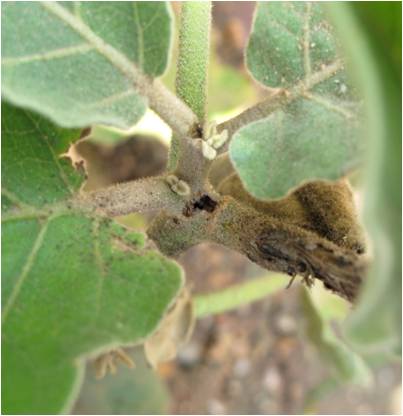
Symptoms-
Management-

3) Thrips :
Management–
4) Mite:
Management-
If infestation of Mite is observed in field, to control take spray of Abamectin@1-2ml/Ltr or Fenazaquin@2ml/Ltr of water.
5) Leaf eating caterpillar:
Management–
1.Nitrogen
|
| Deficiency Symptoms |
|
| Correction Measure |
Foliar spray of Urea 2% twice at weekly interval |
2.Potassium
|
| Deficiency Symptoms |
|
| Correction Measure |
Foliar application of K2SO4 @1%. |
3.Magnesium
|
| Deficiency Symptoms |
|
| Correction Measure |
Foliar spray of MgSO4 @2%. |
4.Calcium
|
| Deficiency Symptoms |
|
| Correction Measure |
Foliar spray of 2% Calcium sulphate twice at weekly intervals. |
5.Sulphur
|
| Deficiency Symptoms |
Newer leaves light green to yellowish leaf veins appear lighter in color leaf tips cupping downward stems hard fibrous and spindly. |
| Correction Measure |
Foliar spray of K2SO4 1%. |
6.Boron
|
| Deficiency Symptoms |
Leaves chlorotic small thick brittle and misshapened the base of the new leaves wrinkled or deformed internodes short with a resetting appearance terminal bud dies. |
| Correction Measure |
Soil application of borax 5 Kg /ha or foliar spray of borax 0.2%. |
7.Manganese
|
| Deficiency Symptoms |
Upper newer leaves affected first interveinal chlorosis veins remaining green chlorotic sports become necrotic and brown plants stunted. |
| Correction Measure |
Foliar spray of 0.5% MnSO4 |
8.Iron
|
| Deficiency Symptoms |
Leaf veins remain green interveinal portion turns yellow young leaves small but not deformed. |
| Correction Measure |
Foliar spray of 0.5% FeSO4 |
9.Zinc
|
| Deficiency Symptoms |
Young leaves small and narrow with interveinal yellow to white coloration, Necrotic spotting of older leaves. |
| Correction Measure |
Soil application of 20-25 Kg ZnSO4/ha or foliar spray of ZnSO4 @ 0.5%. |
1) Damping Off :
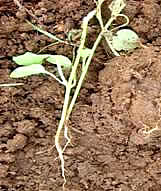
Symptoms-
Management-
2) Phomopsis Blight and Fruit Rot:
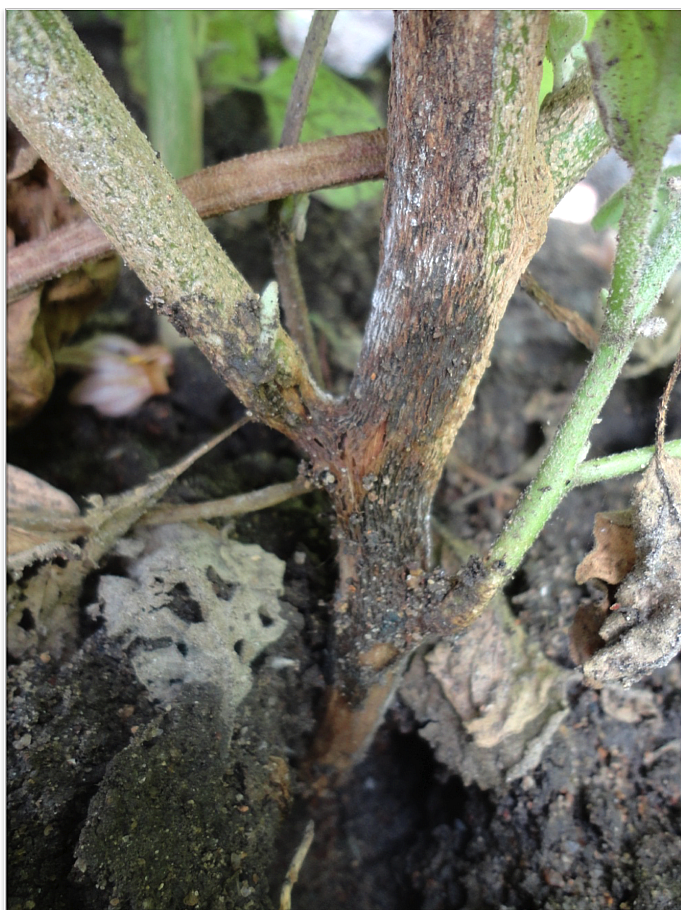
Symptoms-
Management-
3) Little Leaf:

Symptoms-
Management-
4) Mosaic:
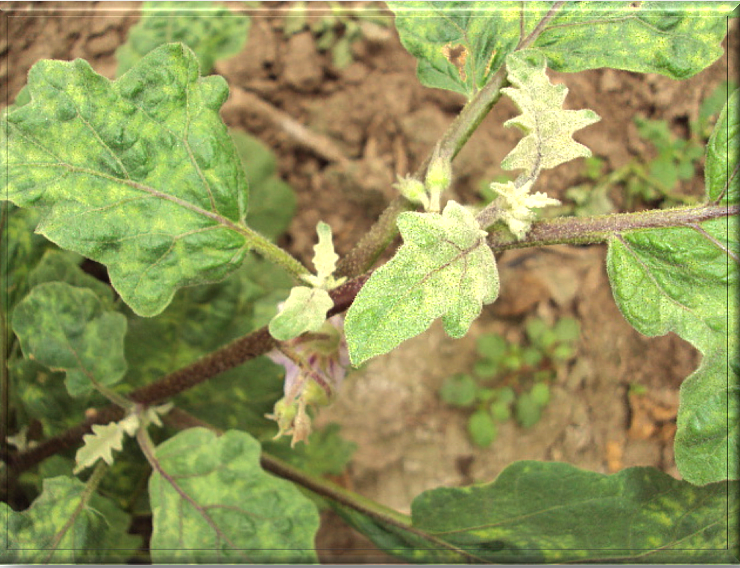
Symptoms-
Management-
5) Wilt:
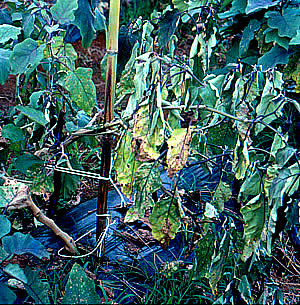
Symptoms-
Varieties : 25 – 30 t/ha
Hybrids : 60 t/ha
Crop Growing districts: Vellore, Salem, Krishnagiri, Dindigul, Coimbatore
Major markets in Tamil Nadu: Ottanchatram, Dindigul, Tirunelveli, Tuticorin and Nagercoil
Grade Specification: Colour, Size, Glossy, smooth and tender.
Colour: light purple or dark purple, green, purple coloured with white stripes.
Size: 25-30 cm long, oblong or round
